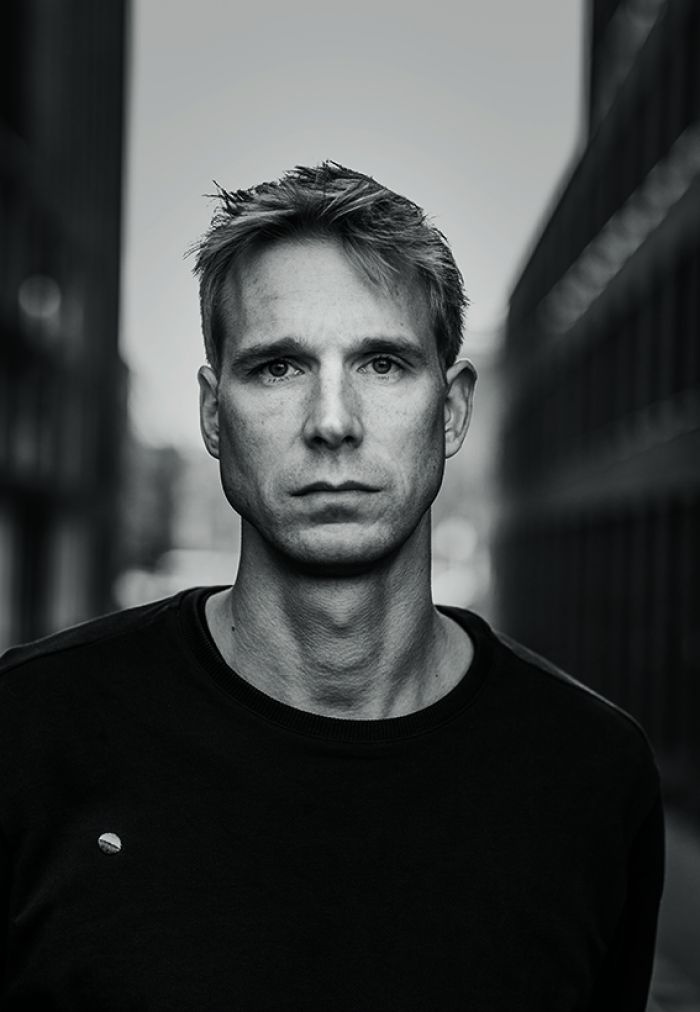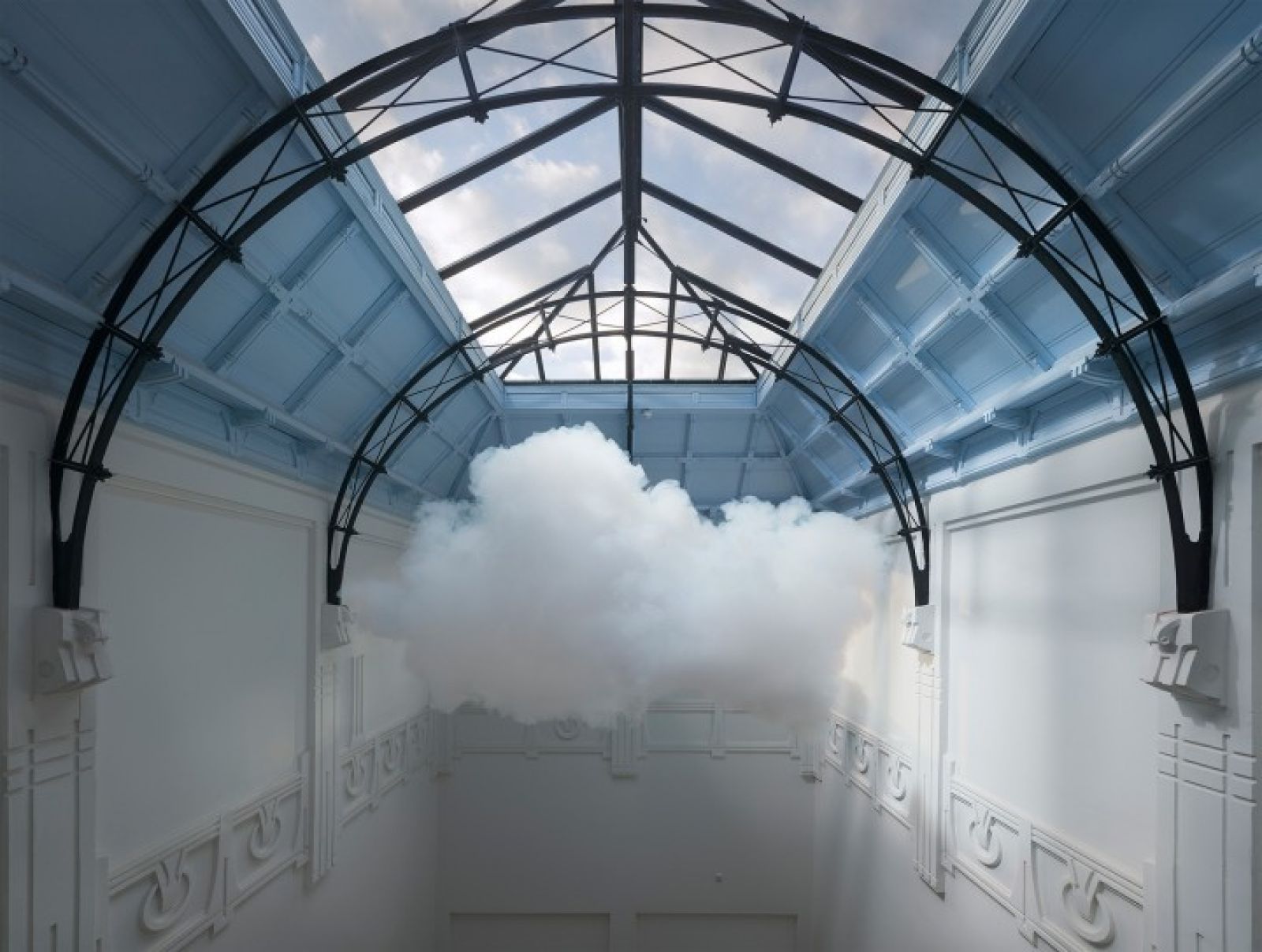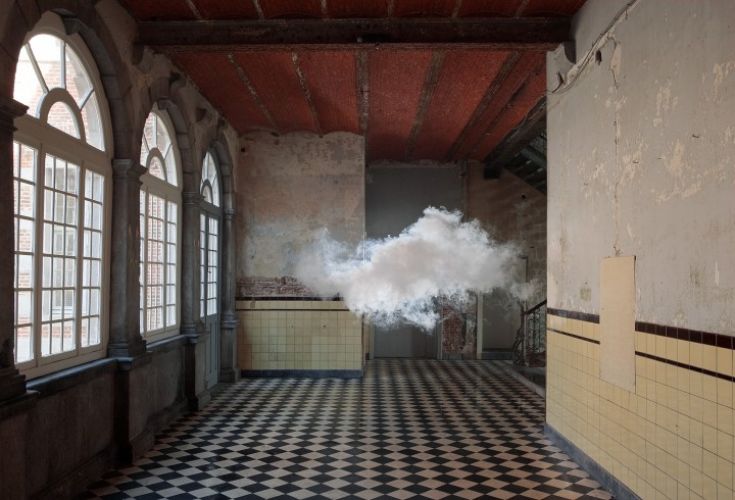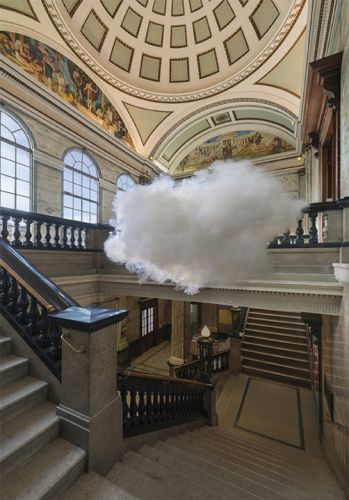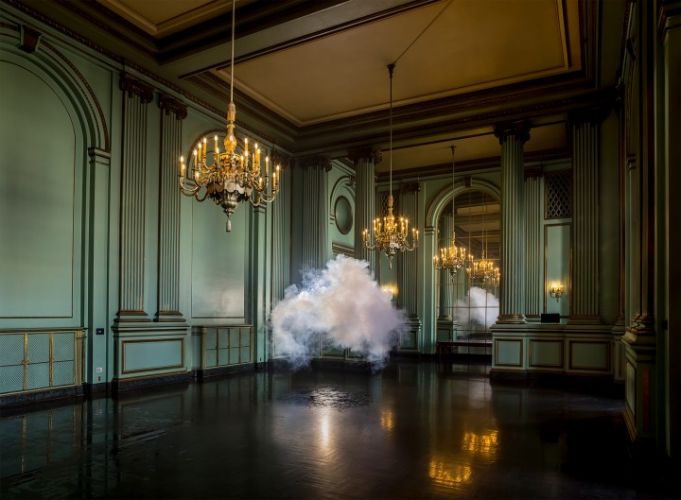upside down
The volatility and ambiguousness of the clouds is also present in Smilde’s other work. Conditioner, for example, is made out of an air filtration system that looks like an intestinal tract and cycles an antiseptic hospital smell. For Until Askaeton has Street View the artist made a replica of the shed façade in the American town of Askaeton that features prominently on Google Street View and placed it in a much older Irish town with the same name but without Google-view. And during a residency in Bolder, Colorado, Smilde constructed a gigantic prism with which he could create an artificial rainbow, only upside down. ‘A rainbow symbolizes happiness and beauty,’ he tells us, ‘but what if you turn it upside down?’ Smilde’s plans are getting more and more ambitious, as are his clouds. ‘I was asked to make one outside last year, in the desert of North-West Australia. Of course, that had little to do with the original idea of the work, but the landscape is so old and untouched that it did make sense to temporarily add something to it. It was a huge undertaking. We had to bring generators and water, a photographer and someone who’d tape everything. I got very nervous for a moment there. At that point it has to work. And it did. The red earth interacted beautifully with the white of the cloud, which floated one metre off the ground. Exactly what it looks like in Dutch landscapes from the seventeenth century.’ Smilde isn’t close to finished with his nimbus. ‘With every image the series gains more depth. I also keep getting better at it.’ His wish right now is to be able to make a cloud in the Turbine Hall of the Tate Modern museum in London, where his hero Olafur Eliasson installed a massive sun in 2003. ‘That would be great, to make a cloud float through that hall a few times every day, preferably for several minutes.’
This interview was published in WOTH issue No8 still available in our shop
